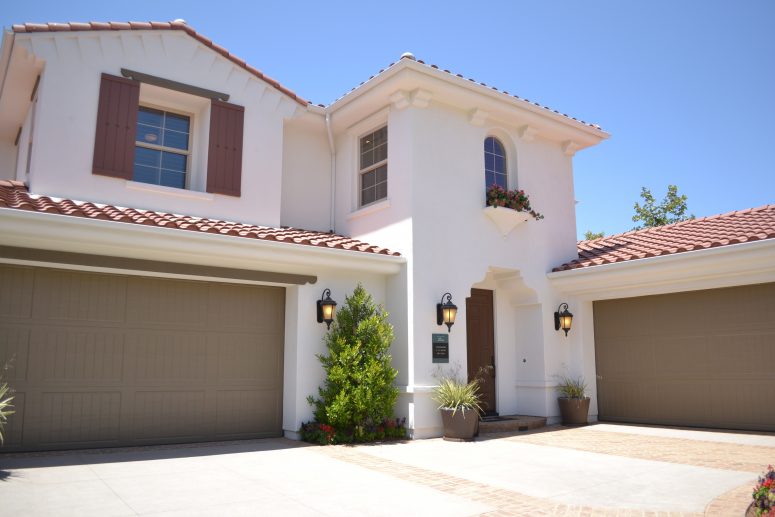Appraisals are professional evaluations of your home’s market value. They can be complex and difficult to calculate and should not be estimated by homeowners or real estate agents. Before you sell a home or refinance your home, lenders require a professional appraisal to be done so that they don’t lend more than a home is valued for.
A professional appraiser uses the size of your home, the number of bedrooms, the number of bathrooms, the current market, and more to calculate the value of your home. Home size is measured by the square footage of living space, so your garage may not be included in the square footage and used for the home’s valuation.
Additionally, the square footage of living space is not the same as the total area under the roof of the home, which does include porches, garages, and balconies. This quote can be needed for some building purposes, but is not used in the appraisal. So, is a garage included in square footage of your appraisal?
Is A Garage Included In Square Footage Of An Appraisal
Garages are typically large, unfinished spaces which are not included in the square footage used to calculate your home’s appraisal value. A garage can still be a good feature and selling point of a home, and it can be appealing to potential buyers.
However, only the finished, livable space is calculated into the home’s square footage that is used for appraisal purposes. However, garage square footage can be converted into living space in order to raise the appraisal value of your home. When garages, attics, or basements are converted into additional rooms and living space, they need to be done properly and with the proper paperwork in order to count in your home’s square footage.
Turning A Garage Into Living Space
For garage square footage to be counted as living space in your home’s appraisal, it will have to meet certain set standards. You can’t just paint the walls and install carpet and call it a finished space. The first and most important step is to obtain the appropriate permits. Check with the city and county in which you live to get the building permit and to find out if there are any additional requirements you need to know about.
Depending on the work that needs to be done for your conversion, plumbing, electrical, and mechanical permits may also be needed. If you are going to use a contractor to convert your unfinished space into a livable area, he will get the appropriate permits.
Either way that you have the conversion project done, make sure that your new additional room meets the standards set by your city and county in order for the garage square footage to count as living space and to be included in your home’s square footage. Additionally, your converted space will need to be heated and cooled in a way comparable to the rest of the home, and there will need to be a door to access the rest of the house without having to go outside for it to be considered a living space for appraisal purposes.
Permit Stipulation Details For Your Garage
The building permits for your area will stipulate important details that must be noted, like how high the ceiling must be, how much ventilation and natural light should be available, and even how many wall outlets and wall switches have to be installed. If part of the unfinished garage or basement space you’re converting is built into a hill, for example, grade requirements may apply. Some appraisers may not consider anything below ground as garage square footage. Learning the information before you begin will help you have a smoother process.
The requirements are important to learn and abide by to avoid consequences like cancellation of your homeowner’s policy or even demolition of the project.
Do I Need A Garage Space To Park?
When you convert an unfinished garage into a living space, you lose a significant place to park. You may decide that this parking loss is okay with you and park in the driveway or allowed road space in front of your house.
However, potential buyers could have a problem with not having a garage to park in. You may want to take this into account when finalizing the plans for your project. If you want to increase the value of your home and make it more appealing before you put it on the market to sell, and you’ve converted the attached garage into a living space, an additional garage could be the answer for you. Being able to add any square footage onto your home automatically raises its appraisal, and converting your garage square footage to count as living space is a cost-effective way to add square footage and increase your home’s appeal and value. It can be a smart move, but you’ll want to weigh the impact on the parking space for potential buyers and the possible need to add a detached garage, too.
How Are Garages Included In The Appraisal?
Is a garage garage square footage included in the square footage used for appraisals? While only finished, livable space is considered in the square footage of your home, a garage is a positive aspect of a home. Appraisals value homes not only by the livable square footage but also by the overall picture of the home and property features in comparison to the homes around it. If you are considering adding a garage to the existing home’s structure, make sure the design matches the rest of the home. Consider adding a door that swings open so that it can be used as a separate entrance to the home or so that the garage space could later be converted into another room.
Garage Area Uniformity
If you are in a neighborhood or subdivision where almost all of the other homes have garages and your home does not, your lack of a garage could appear negatively on your home appraisal. Homes are measured against similar homes nearby when the appraisal is done, and anything that places your home beneath the others can reduce the value.
You may want to take notice of the other homes nearby in comparison to your home. If you are considering building a garage or an addition onto your home, you can weigh the pros and cons of this decision. For example, is the amount it will cost to build this addition more than the additional value that will be added to the home in order to sell it?
Garages in Bad Shape
Having a garage that is in poor condition can have a negative impact on the value of a home. If your house is pristine but your garage is in disrepair, you can choose to leave the garage standing and have it repaired or to tear it down. A torn down garage can be an eyesore, so in this situation, you may want to obtain the proper permits and have it rebuilt.
Learn More About Garage Square Footage
We know this can sound like a lot of factors to consider and a lot to decide on, but you don’t have to do it alone. If you’d like to get an appraisal to find out the value of your home in order to help you make decisions like increasing living space, or learn more about if a garage is included in the square footage of your home appraisal, we are here to help. Call us at 1-801-882-2292 or request a free quote today!

